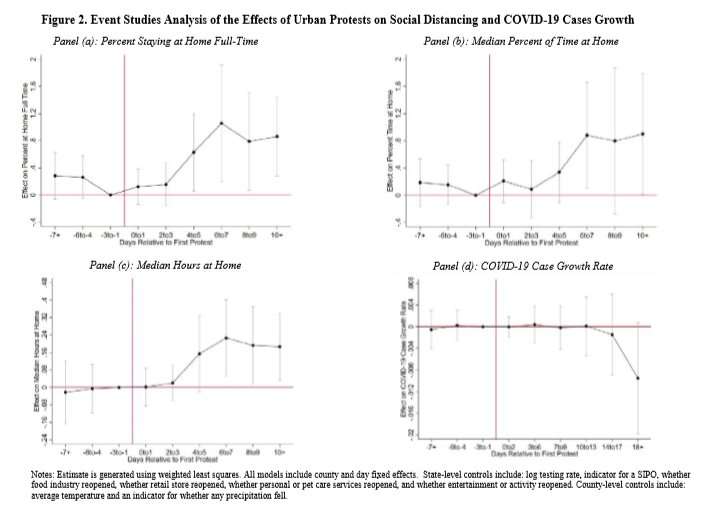Study shows no correlation between protests and general population COVID-19 case increase

In a new working paper released today, University of Colorado Denver researchers found that the recent Black Lives Matter protests did not lead to an increase in COVID-19 cases. The findings were reported by the National Bureau of Economic Research in a working paper by Andrew Friedson, Ph.D., assistant professor of economics at CU Denver, along with researchers from the Center for Health Economics and Policy Studies at San Diego State University, and Bentley University.
Using anonymous cell phone tracking data from SafeGraph, Inc., as well as data on the local prevalence of COVID-19 from the Centers for Disease Control and Prevention, the researchers found while social distancing between protesters may have decreased, the general population saw an increase in social distancing behaviors.
"This study shows that the impact of the protests on COVID-19 was not driven solely by the protest attendees," said Friedson. "The overall impact on the population depends on the behavior of the entire population, some of which increased social distancing"
Mass protests and social distancing
- Trends in social distancing only appear after the protesting began and they show positive change—an increase in social distancing. The authors found that any direct decrease in social distancing among the population participating in the protests was more than offset by increasing social distancing behavior among others who may have chosen to shelter-at-home and circumvent public places while the protests are underway.
- The rise in social distancing emerges after about three days following the start of protests in a location. Social distancing then continued to grow over the next few days, and then leveled off.
- These results were not due to places with (or without) protests having pre-existing trends in social distancing.
Mass protests and COVID-19 case growth
- Trends in COVID-19 cases were virtually identical between protest and non-protest counties both before and immediately after protests began. After two weeks, case growth slowed in places with protests relative to those without.
- Given the increase in sheltering-at-home, one would not expect any strong increases in COVID-19 case growth.
- There is a concern that protestors who travel potentially run the risk of carrying COVID-19 back to their homes. In this case, there may be an increase in cases due to community spread from this subset of the population (protest attendees), that was washed out by the overall increase in distancing behavior.
This study includes a long enough time-frame to detect a first wave of community transmission. It is important to point out, that the results are for the entire population in a location and cannot tell what was happening to protest attendees and non-attendees separately.




















